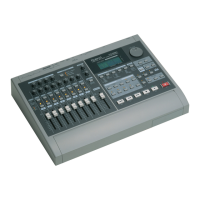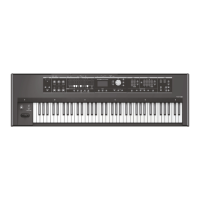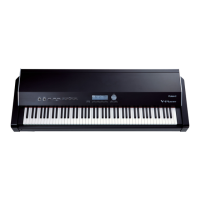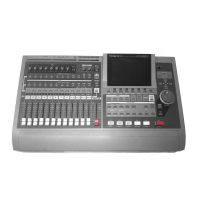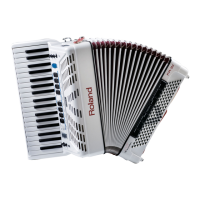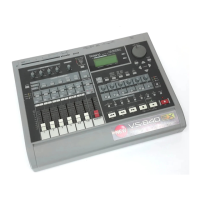134
VS-880 Application Guide
Slider
Another term for a straight-line fader (see “fader”).
Also may refer to any straight-line control, as
opposed to a rotary control.
SMPTE
Society of Motion Picture and Television Engineers.
(Formerly, SMPTE, Society of Motion Picture
Engineers.) Also refers to a common standard for
measurement of intermodulation distortion (IM), and
for a standard reference code for identification of
frames of film or videotape; SMPTE code is also used
for synchronization of two or more audio tape
recorders.
SMPTE Time Code
A synchronization code developed for video
designed for frame edge lockup of multiple video
and audio devices. SMPTE is calculated in
Hours:Minutes:Second:Frames. There are several
different types of SMPTE frame rates, ie: 30 frames
per second, 29.97 fps non-drop, 29.97 fps drop, 25 fps
(European standard) and 24 fps (used for film). The
VS-880 supports all types of MTC which corresponds
to all types of SMPTE. You only need to use the
MIDIMAN ‘Video Syncman’ unit to interface
between a SMPTE source and the VS-880. The VS-880
also will resolve (exactly lock to) the frame edge of
the SMPTE or MTC. This means that the lock will not
drift or go out of sync even if the song or project is
very long.
Solo
A feature of many mixing consoles that allows one
input signal, one Buss, or a combination of “soloed”
signals to be monitored exclusive of all other signals
- without disturbing the main output mix. For
example, in the middle of a show with an 18 in x 2
out console, an engineer might listen to one
microphone (perhaps to check for a problem, to see
what it is picking up, or adjust the input position’s
EQ). He merely engages that input position’s solo
button - the sound reinforcement and/or tape
recorder feeds are not affected.
SPP (Song Position Pointer)
Song Position Pointer works in conjuction with MIDI
Clock to provide the current measure and beat
information of the song or sequence. This message
allows the user to rewind and fast forward the
‘master’ device and still synchronize with the ‘slave’.
S/PDIF (Sony/Philips Digital Interface
Format)
A digital recording format that conforms to the AES/
EBU consumer standard for the high-speed transfer
of two channels of digital audio data. The VS-880 has
a coaxial S/PDIF connector that allows you to
connect digitally to a consumer or professional DAT
recorder or CD player.
Stereo Buss
In a mixing console, the Buss or channel which is
used to feed a program to a stereo tape recorder, 2-
channel sound system or other stereo equipment. (A
stereo Buss actually consists of two Busses, the left
and right Busses.)
Stereo Master
A 2-gang fader which simultaneously controls the
overall level of the left and right outputs (i.e., the
stereo Buss output).
Sub-Master
A level control or fader which adjusts the signal level
on a given output channel, prior to the master fader
(which is normally a multi-channel fader). For
example, there might be a Left Channel Submaster, a
Right Channel Submaster and a Stereo Master.
Sync
In multi-track tape recorders, a technique where
channels on the record head can be used for tape
play back while other channels are being recorded.
This permits performers to listen to previously
recorded tracks and to record additional tracks in
perfect Synchronization.
Sync Track
The VS-880 has a SYNC TRACK that is independent
from the 8 recording tracks. You can record a TEMPO
MAP from a drum machine or sequencer and then
use this map to synchronize the VS-880 to the
sequencer. In this case, the VS-880 would be the
Master and the sequencer would be the Slave.
Synchronizer
A device which “reads” a time code recorded on two
or more tape machines and synchronizes the units
(via servo control of their motors) to move in the
desired relationship to one another. Also known as
“time code synchronizers,” such devices are
available to sync any combination of audio tape
recorders, video tape recorders, or film recorders and
projectors.

